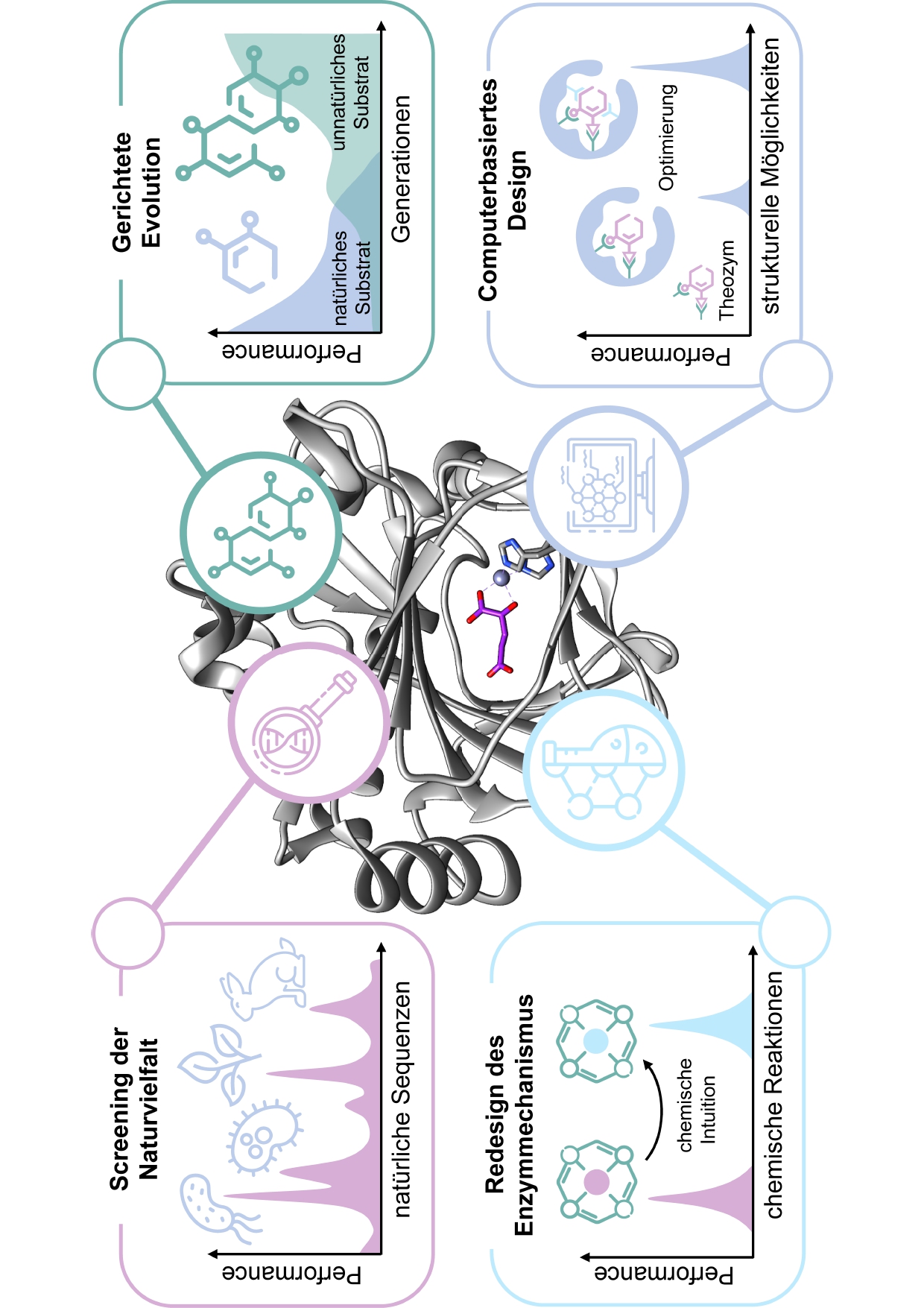Enzymes have been used in biocatalysis to produce semi-synthetic antibiotics, various building blocks for active pharmaceutical ingredients and basic chemicals such as acrylamide for polymers for decades. Biocatalysis can make chemical processes more efficient, specific and energy-saving and, against the backdrop of energy shortages and climate change, is a beacon of hope for the development of greener chemistry and a comprehensive circular economy. In the last five years, innovative and groundbreaking progress has been made in this field: Key breakthroughs have been, for example, the development of new bioinformatics tools such as machine learning, which facilitate the customized design of biocatalysts, or the possibility of equipping enzymes with the ability to carry out new chemical reactions not known from nature. It is also possible to synthesize complex molecules such as starch from the greenhouse gas carbon dioxide, by cleverly combining enzymes.
Enormous boost thanks to databases with protein sequences and machine learning
Natural enzymes are adapted to their metabolic function through evolution and must therefore be optimized for industrial applications using protein engineering methods. Although this has been done for almost three decades, important new methods have been developed in the last five years. Not only has the number of protein sequences stored in public databases increased twenty-fold, but reliable protein structures can now also be generated automatically and used together with machine learning methods to rapidly adapt biocatalysts to the requirements of an industrial process. As a result, it is now possible to use biocatalysis to produce highly complex drug molecules such as islatravir for the treatment of AIDS or therapeutic oligonucleotides. The first author of the Science article, Prof. Dr. Rebecca Buller, notes that the use of enzymes is becoming a reality in an increasing number of areas: "The rapid development of bioinformatic and molecular biological methods is making the biocatalytic synthesis of increasingly complex products possible, also by teaching enzymes completely new tricks."
Enzyme to break down plastic thanks to protein engineering
The disposal of plastic waste is another global problem that can be addressed with the help of biocatalysis. In 2020, for example, protein engineering methods described a highly efficient esterase that can now be used to recycle PET plastic on an industrial scale. "The state-of-the-art enzyme engineering methods summarized in our review should therefore make it possible to establish efficient recycling processes for other plastics in the foreseeable future," predicts Prof. Dr. Uwe Bornscheuer.
The review article, written in collaboration with an international team of authors, summarizes the most important developments in biocatalysis over the last decade, which it illustrates with impressive application examples. It also ventures a look into the future of this innovative field of research. In addition to the combination of chemical and enzymatic catalysis processes, the authors also see completely new fields of application for enzymes, for example in the production of RNA therapeutics, in gene therapy and other innovative contributions to the conservation of resources and climate protection.
Further Information
Buller, R., Lutz, S., Kazlauskas, R.J., Snajdrova, R., Moore, J.C., Bornscheuer, U.T. (2023), From nature to industry: harnessing enzymes for biocatalytic processes, Science, 382, eadh8615.
The article can be found at: https://doi.org/10.1126/science.adh8615
Contact at the University of Greifswald
Prof. Dr. Uwe Bornscheuer
Institute of Biochemistry
Felix-Hausdorff-Straße 4, 17487 Greifswald, Germany
Tel.: +49 3834 420 4367
uwe.bornscheueruni-greifswaldde
http://biotech.uni-greifswald.de
ORCID: https://orcid.org/0000-0003-0685-2696
ResearchGate: https://www.researchgate.net/profile/Uwe_Bornscheuer
LinkedIn: https://www.linkedin.com/in/uwe-bornscheuer-1581827a/
Contact at the ZHAW
Prof. Dr. Rebecca Buller
Institute of Chemistry & Biotechnology
Zurich University of Applied Sciences (ZHAW)
Einsiedlerstrasse 31, 8820 Wädenswil, Switzerland
Tel.: +41 58 943 5438
rebecca.bullerzhawch
https://www.zhaw.ch/ccbio
ORCID: https://orcid.org/0000-0002-5997-1616
LinkedIn: https://www.linkedin.com/in/rebecca-buller-blomberg-99556677/

